
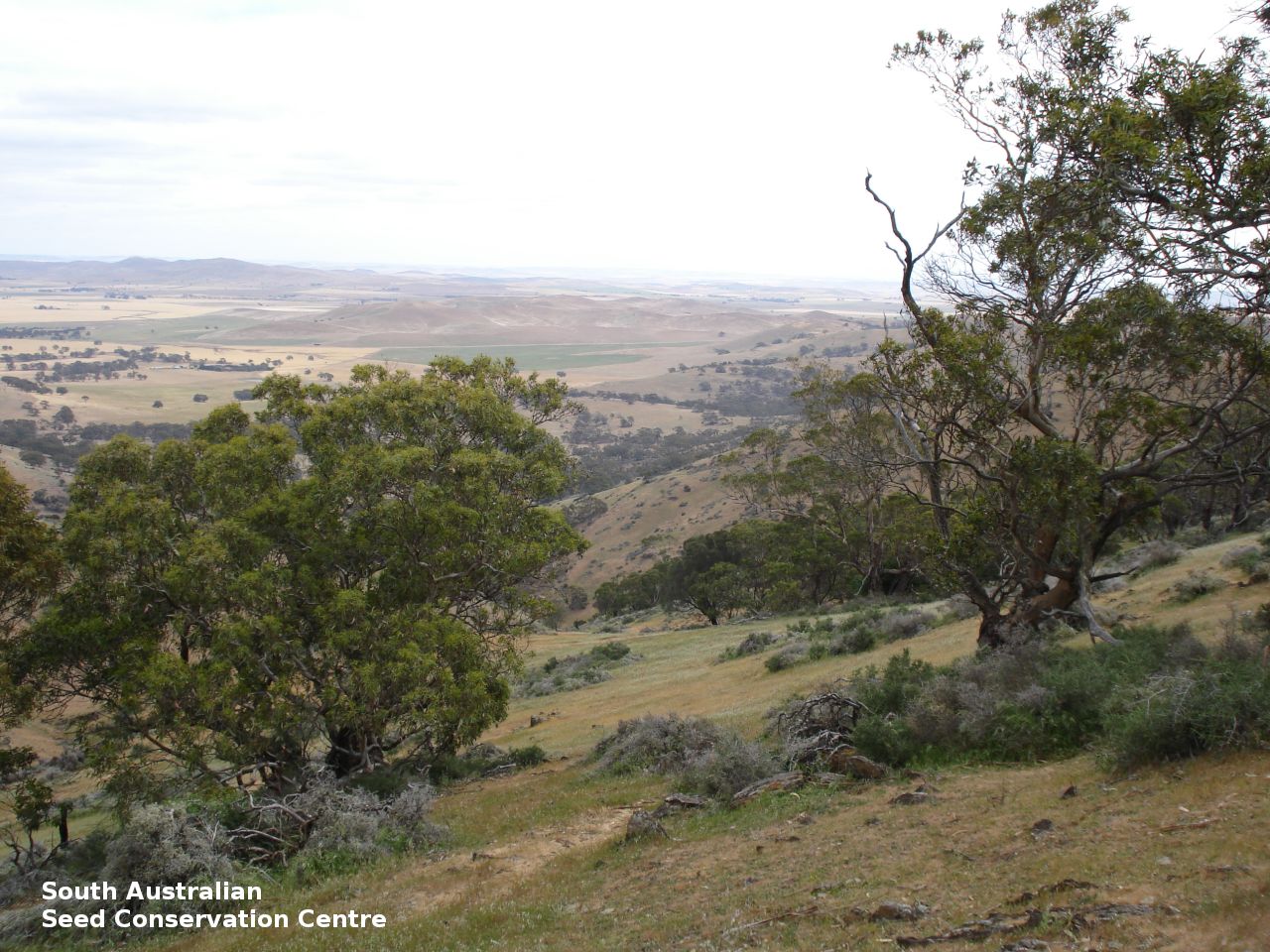
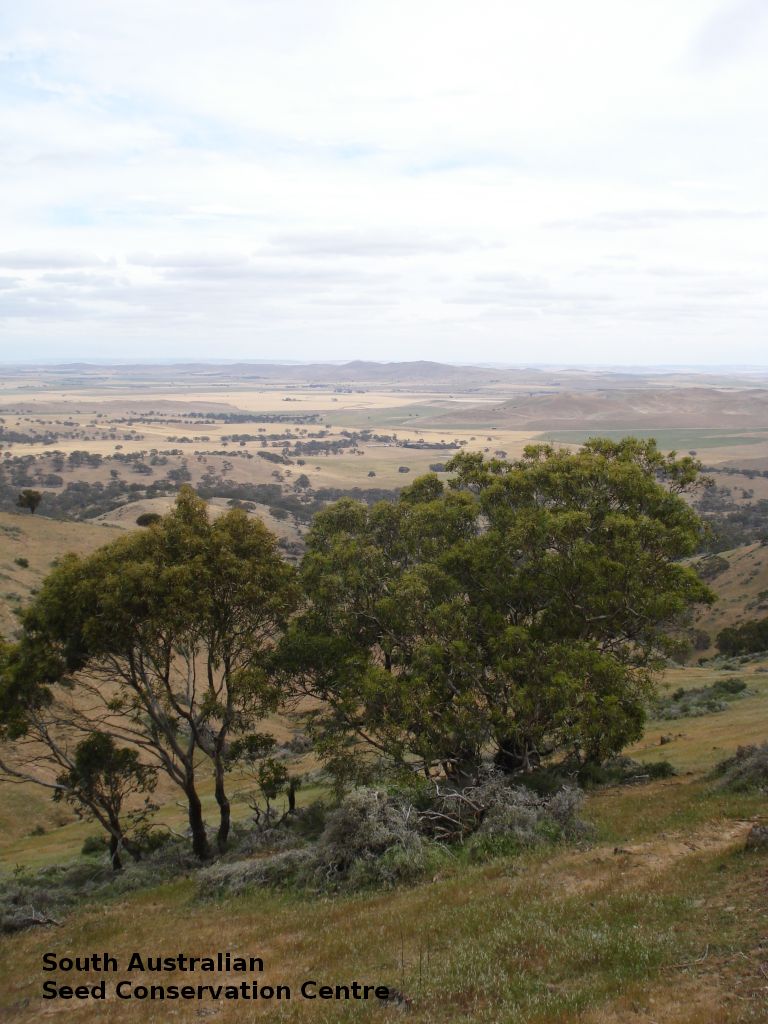
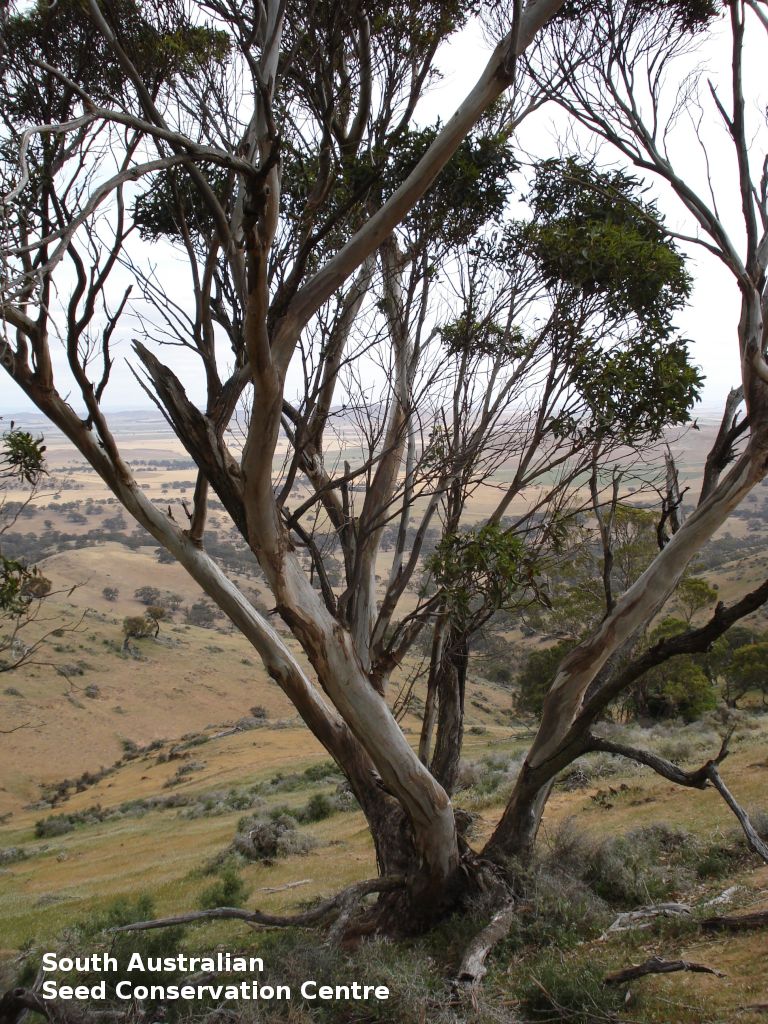
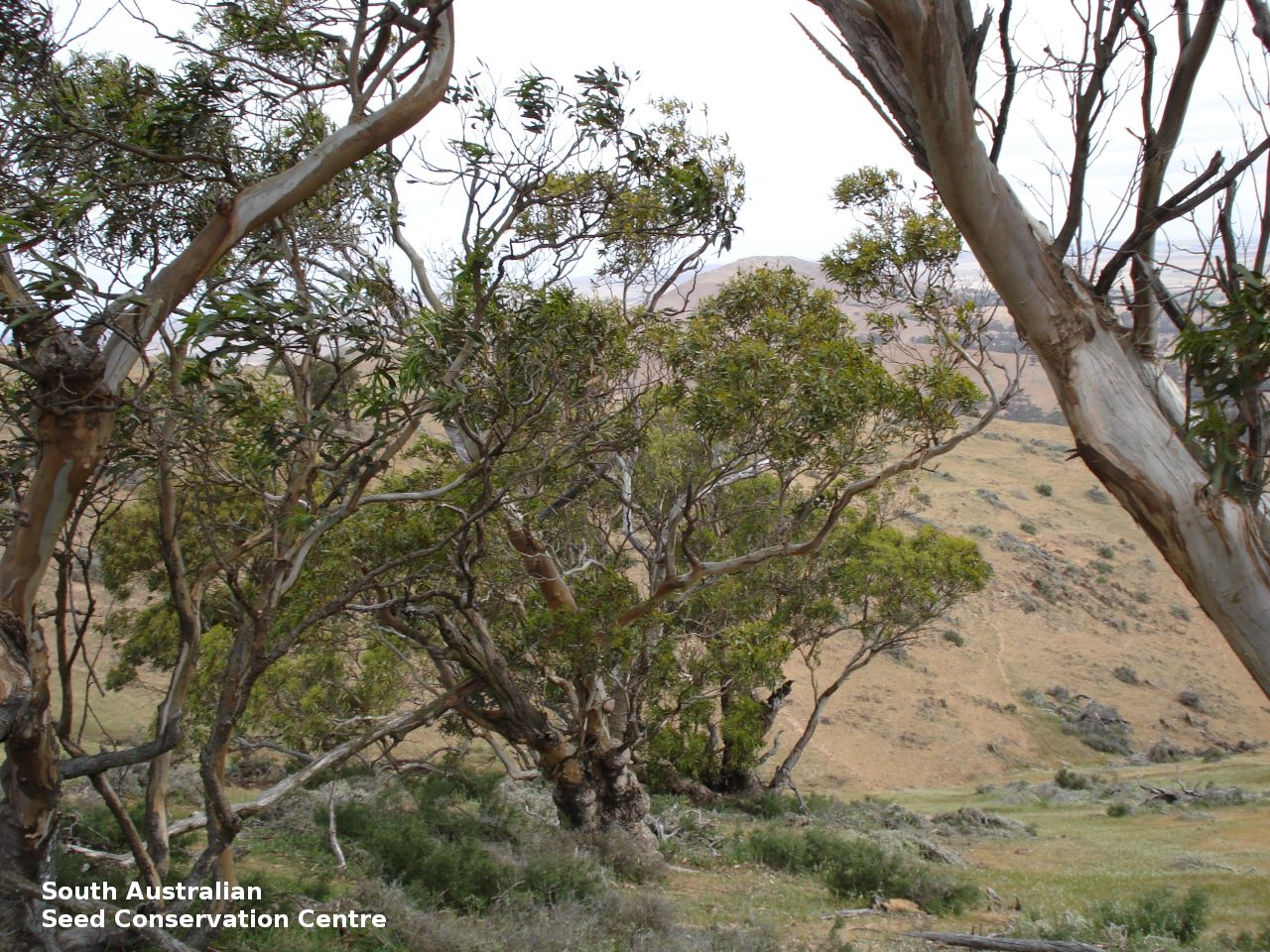
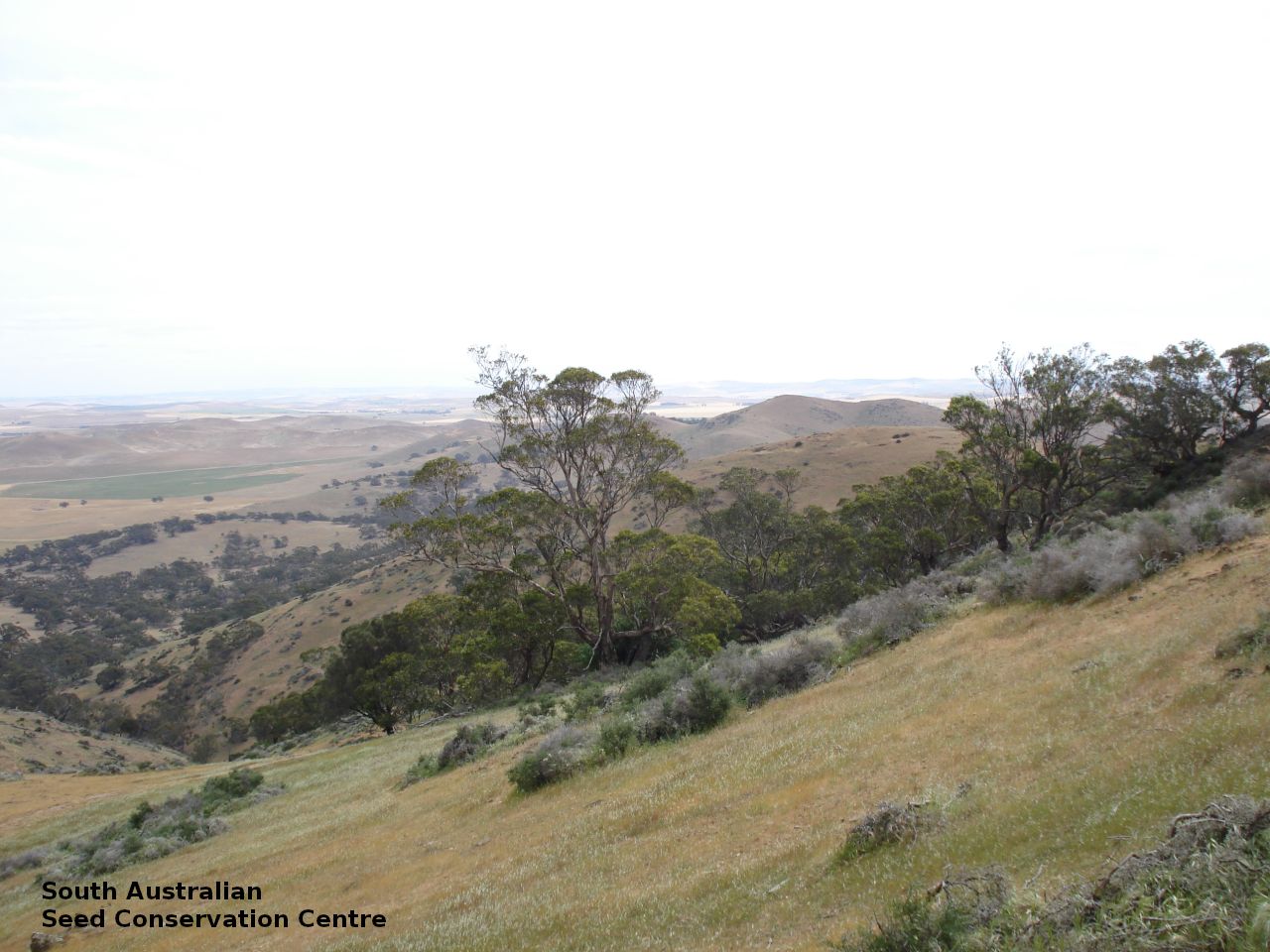

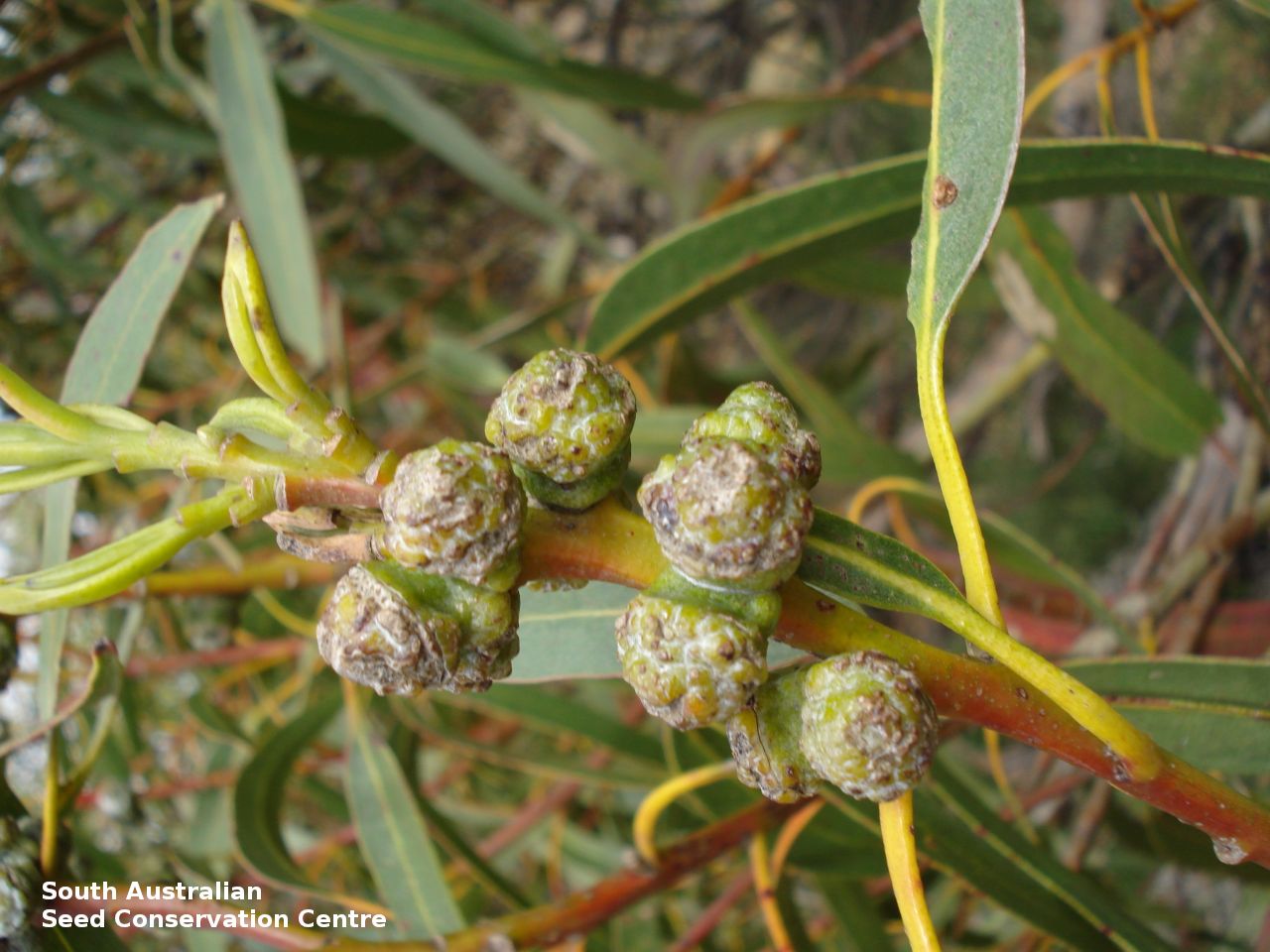

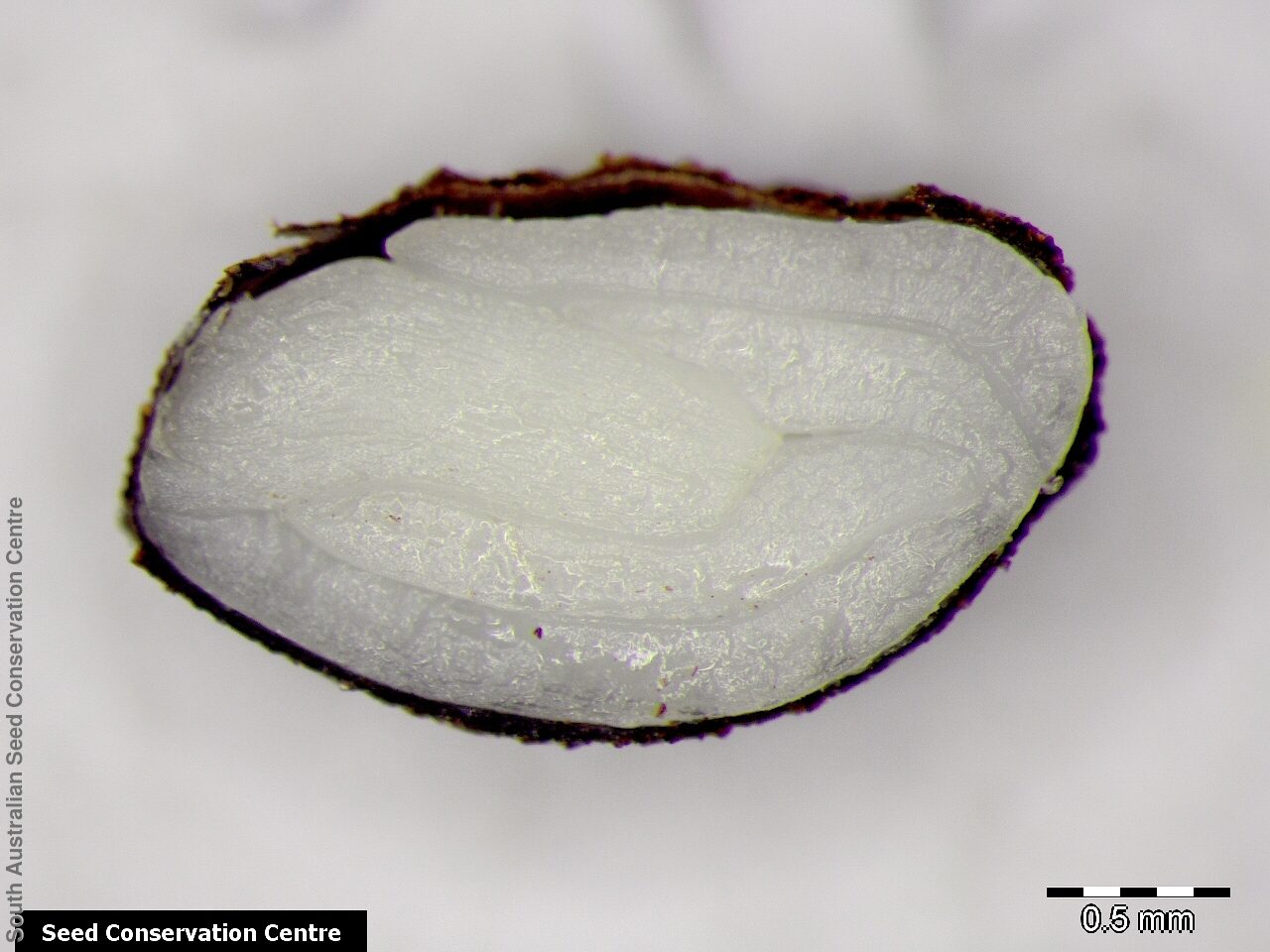
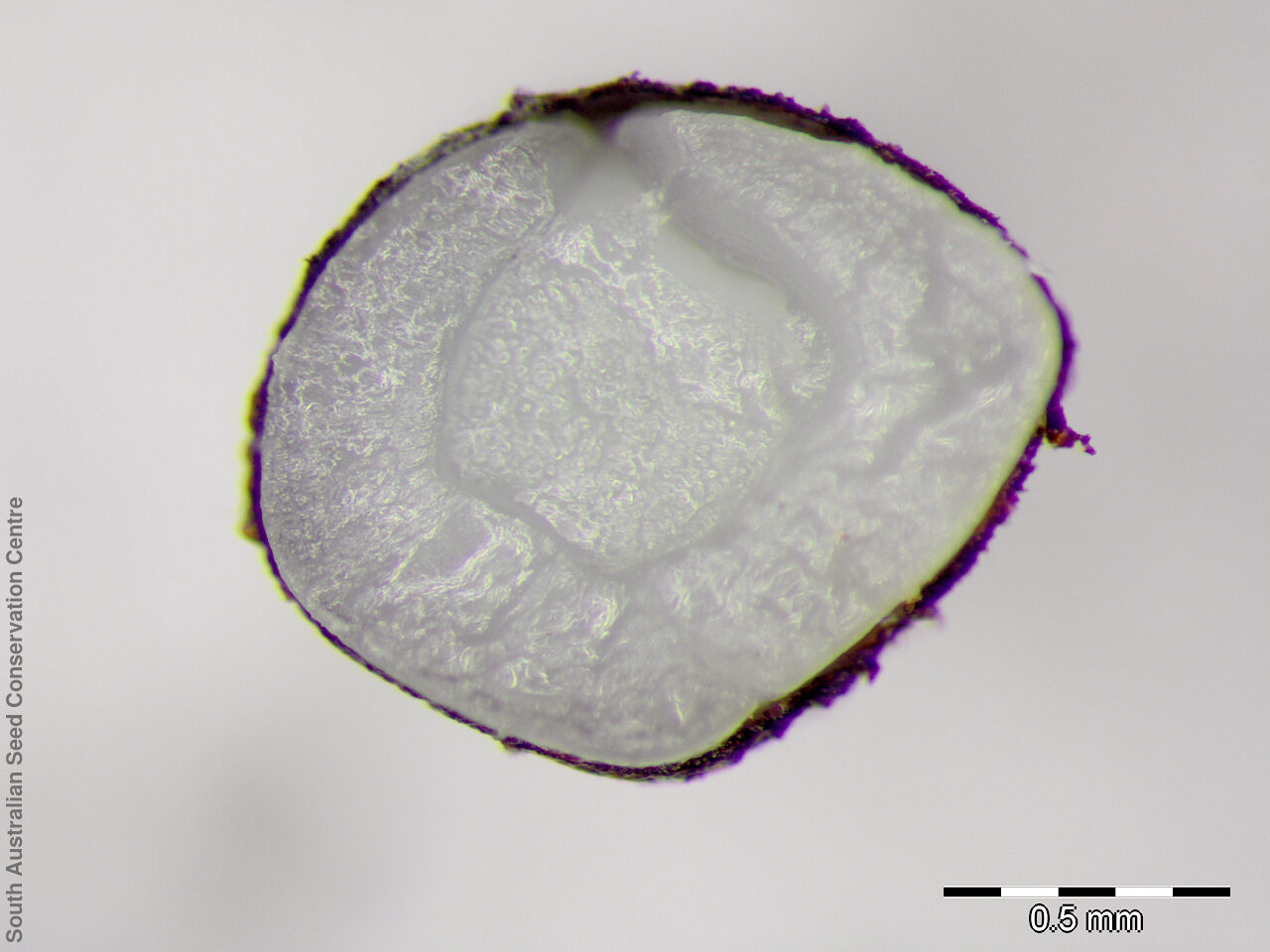
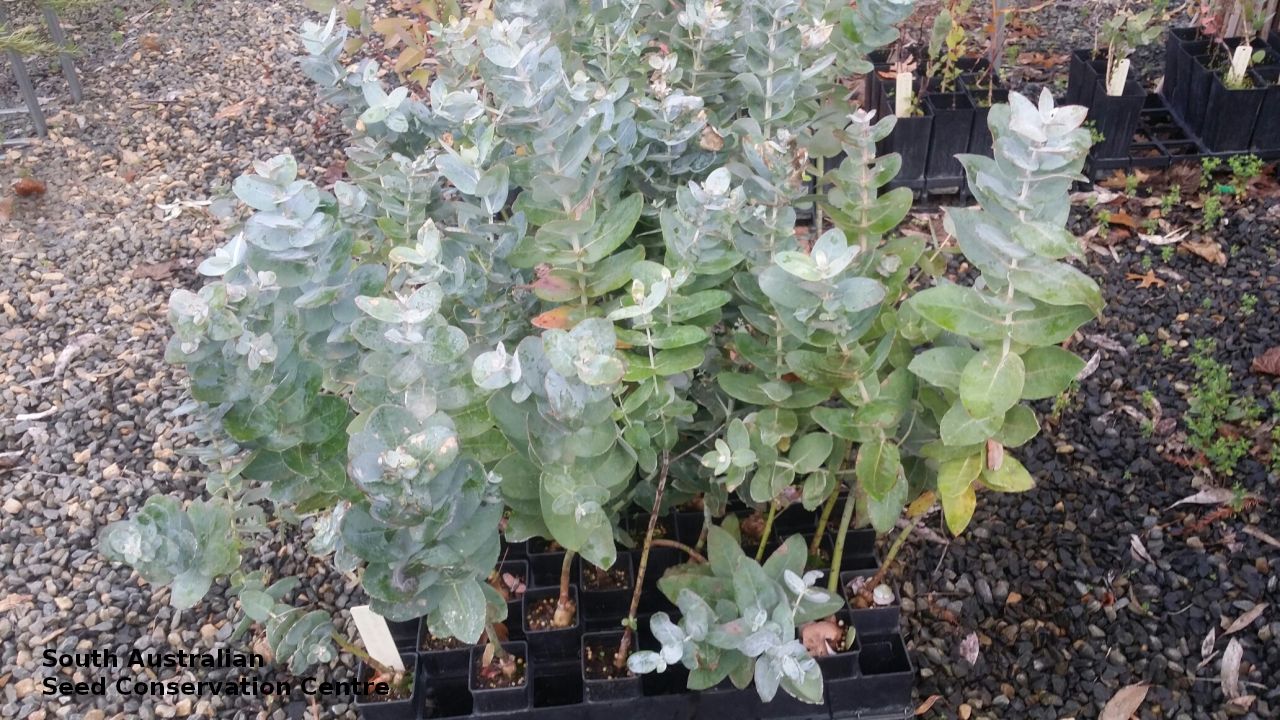


Prior names
Eucalyptus globulus ssp. bicostata
Eucalyptus globulus var. bicostata
Common names
Southern Blue Gum
Eurabbie
Etymology
Eucalyptus from the Greek 'eu' meaning well and 'calyptos' meaning covered; alluding to the cap or lid which covers the stamens in the bud. Bicostata from the Latin 'bi' meaning two and 'costatus' meaning ribbed; referring to the two opposite ribs on each bud and fruit.
Distribution and status
Found only on Mount Bryon in South Australia, growing in open grassy woodland on steep upper, south-facing slopes. Also found in New South Wales and Victoria. Native. Very rare in South Australia. Common in the other states.
Herbarium region: Northern Lofty
AVH map: SA distribution map (external link)
Plant description
Single- to multi-stemmed tree to 18 m high with smooth, reddish-tan to grey to cream bark throughout or sometimes with some loose plate-like rough bark at the base. Juvenile leaves ovate to elliptical, lacking stalk, wavy, waxy, dull, greyish. Adult leaves to 400 mm long and 50 mm wide, lanceolate, glossy, dark green. Flowers in groups of 3 in axils of the leaves with very short or no stalk. Buds to 18 mm long and 14 mm wide, waxy, bud-cap warty, equal in length or shorter than the 2-ribbed base. Flowers cream appearing between October and February. Fruits are round fruit to 17 mm long and 20 mm wide, lacking individual stalks, 2-ribbed, waxy when young, disc broad and ascending, valves 4 or 5 above the rim. Seeds are dark brown to black ovoid seed to 2 mm long and 1.5 mm wide. Seed embryo type is folded.
Seed collection and propagation
Collect seeds between January and December. Collect mature fruits that are dark and hard (difficult to break with a finger nail), with the valves un-open any time of year. Leave the fruits in a breathable container in a dry room for one to two weeks. This allows the valves on the fruit to open and release the seeds. Separate the seeds by placing all the materials into a bucket and shaking it to dislodge the seeds. Pass the material through a sieve to separate the unwanted material. The finer material will contain both seeds (soft) and frass (hard) usually distinguishable from each other but can be very similar in shape and colour. With finer sieves, the seeds can be separated from the frass but this is not essential for storage or propagation. Store the seeds with a desiccant such as dried silica beads or dry rice, in an air tight container in a cool and dry place. From two collections, the seed viability were high, ranging from 90% to 95%. Seeds are non-dormant, viable seed should germinate readily.
| Location | No. of seeds (weight grams) | Number of plants | Date collected | Collection number Collection location | Date stored | % Viability | Storage temperature |
|---|---|---|---|---|---|---|---|
| BGA | 5,800 (11.67 g) | 4 | 19-Sep-2006 | RJB69410 Northern Lofty | 1-Aug-2007 | 90% | -18°C |
| BGA MSB | 17,500 (33.7 g) 17,500 (33.7 g) | 25 | 23-Sep-2007 | RJB73888 Northern Lofty | 19-Sep-2008 | 95% | -18°C |
| BGA | 33,000 (56.84 g) | 25+ | 31-Oct-2008 | PJA181 Northern Lofty | 1-Jan-2012 | -18°C | |
| BGA | 12,700 (21.65 g) | 20 | 25-Aug-2014 | JRG154 Northern Lofty | 1-Jan-2016 | 85% | -18°C |
Number of plants: This is the number of plants from which the seeds were collected.
Collection location: The Herbarium of South Australia's region name.
% Viability: Percentage of filled healthy seeds determined by a cut test or x-ray.